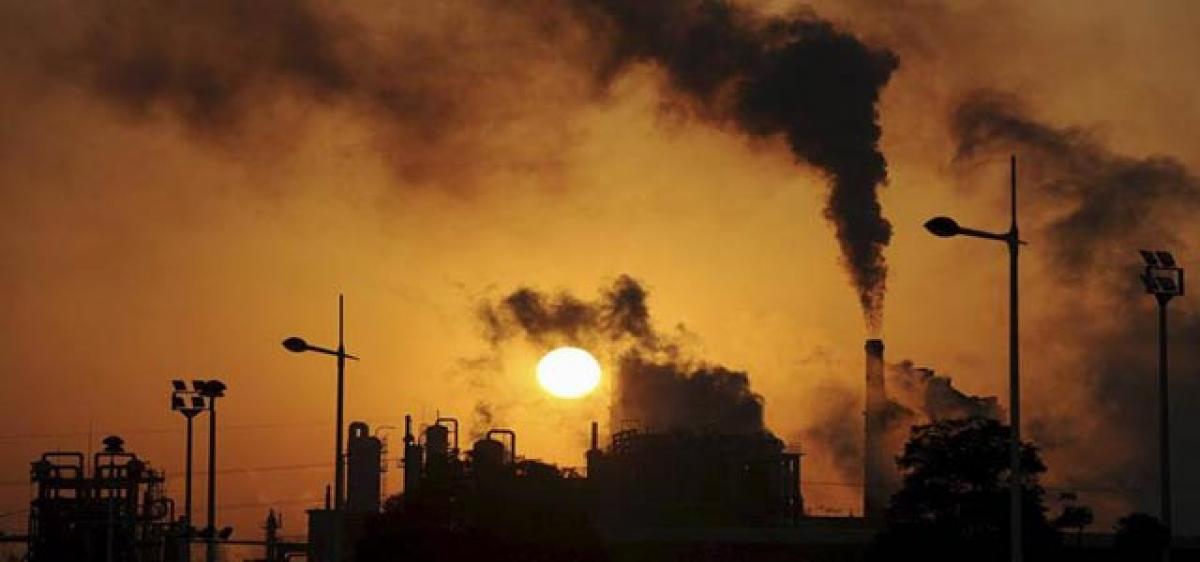Live
- NASA Tracks Five Giant Asteroids on Close Approach to Earth Today
- Pushpa 2 Hits ₹1000 Crore in 6 Days: How It Compares to Other Top Indian Films
- Vivo X200 and X200 Pro Launched in India: Price, Specifications, and Features
- Nitin Gadkari Admits Feeling Embarrassed at Global Summits Over Rising Road Accidents in India
- Opposition Slams ‘One Nation, One Election’ Bill as Anti-Democratic; BJP Allies Support the Move
- Celebrate Karthigai Maha Deepam Virtually with Sri Mandir’s LIVE Darshan Experience
- BJP Extends Support to Samagra Shiksha Abhiyan Employees' Strike, Demands Immediate Regularization and Welfare Benefits
- Dr. M. Priyanka Stresses Quality Education, Nutritious Meals, and Cleanliness in Schools
- Mandal Level CM Cup Sports Concludes in Ija with Promising Talent and Enthusiastic Participation
- Harish Rao Slams Revanth Reddy: "More Talk, Less Action"
Just In

Common problems potentially require common solutions, and the need for a dialogue. This is true in the case of China and India when it comes to their challenge of tackling air pollution and switching to clean energy. Poor air quality has become a major political concern in both the countries.
Common problems potentially require common solutions, and the need for a dialogue. This is true in the case of China and India when it comes to their challenge of tackling air pollution and switching to clean energy. Poor air quality has become a major political concern in both the countries.
It was a headline topic at the opening of the National People's Congress on March 5, 2017, with Chinese Prime Minister Li Keqiang reaffirming the government's commitment to clearing the skies through increased investment in clean energy and implementing tougher sanctions for polluters.
In order to effectively tackle the pollution crises, technologies that support clean air, water and soil in both China and India must gradually replace polluting alternatives. Implementation of this transition will largely depend on local factors. So what is the best approach for each government to take in promoting these technologies: the stick or carrot? And which incentives, or disincentives, are the most effective?
Both the countries face similar challenges. Each has prioritised the installation of de-sulfurising, de-nitrating and de-dusting equipment at existing coal-fired electricity plants in order to curb harmful emissions. Both China and India have applied emission standards to their electricity, transport and industrial sectors. However, compliance with these standards remains a major challenge.
Beijing, for instance, is still believed to be at least a decade away from blue skies, whereas India lags still further behind. To complement command-and-control regulations such as emission standards, "the stick," China is also using a "carrot" by offering a premium sale price to coal-fired generators that have installed emission abatement equipment. The value of this "carrot" was estimated at around 100 billion yuan per annum ($14.5 billion) in 2014 and 2015.
Given its lower level of economic development and budgetary constraints, India cannot afford using such expensive carrots to encourage reduction of pollution from coal plants. India prioritises provision of affordable electricity to its population and improving energy access for the 20 per cent of people that still do not have electricity in their homes. This is very different from China, a country with an electrification rate of 100 per cent that is addressing a major challenge of over-capacity in coal-fired generation.
India also levies a cess on coal use that is partially allocated to support clean technologies. Charged at Rs 400 ($6) per tonne of coal, the cess (a form of carbon tax) has seen an eightfold increase since 2014. Between 2011 and 2016 an estimated Rs 13,616 crore (over $2 billion) from the coal cess revenue was transferred to the National Clean Energy Fund.
Feed-in tariffs and other carrots for renewable energy have driven a rapid increase in installed renewable energy capacity in both China and India. However, this additional capacity will only enable a switch to cleaner energy if it is used, and in both China and India, some of the new wind capacity has faced curtailment problems.
In India, renewable energy developers enjoyed a generous accelerated depreciation allowance, but were not given a guarantee for generation or dispatch. However, India has capped this allowance at 40 per cent and wind power is being developed through the reverse auction mechanism whereby the bid is won by the seller quoting the lowest price.
These few examples illustrate that there is a lot of money and regulations already on the table. What is missing is a system that traces the efficacy of both carrot and stick policies on energy waste and air quality in a way that is simple for governments and other stakeholders to use. Another opportunity is the voluntary review of fossil fuel subsidies within G20 that China completed jointly with the US when it was hosting G20 summit in 2016.
The purpose of this review was identifying toxic carrots -- those measures of government support in the energy sector that result in wasteful consumption of energy. China's review listed nine subsidies worth $14.5 billion and included a timeline for their phase-out. India will host the G20 summit in 2019 and as more G20 countries (Germany, Mexico and Indonesia at the time of writing) volunteer for peer review, there are increasing expectations of India to do the same.
By Ivetta Gerasimchuk, Lucy Kitson & Lourdes Sanchez

© 2024 Hyderabad Media House Limited/The Hans India. All rights reserved. Powered by hocalwire.com







